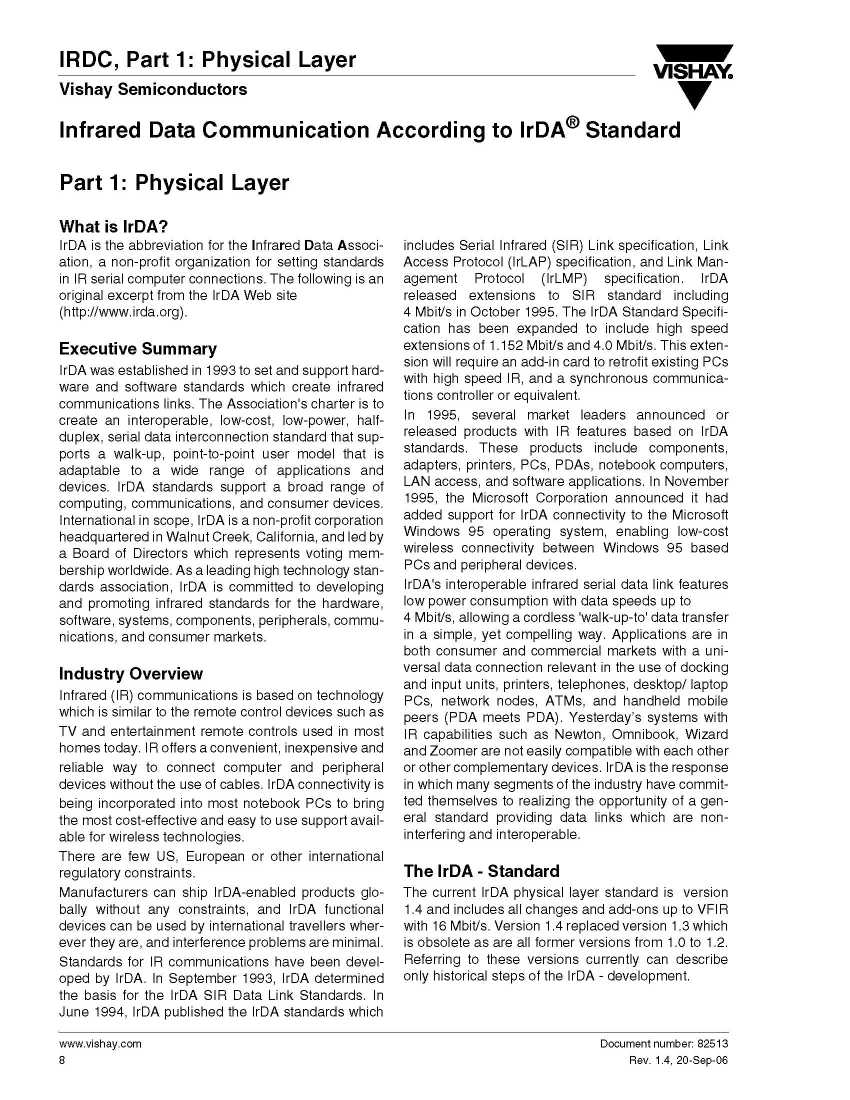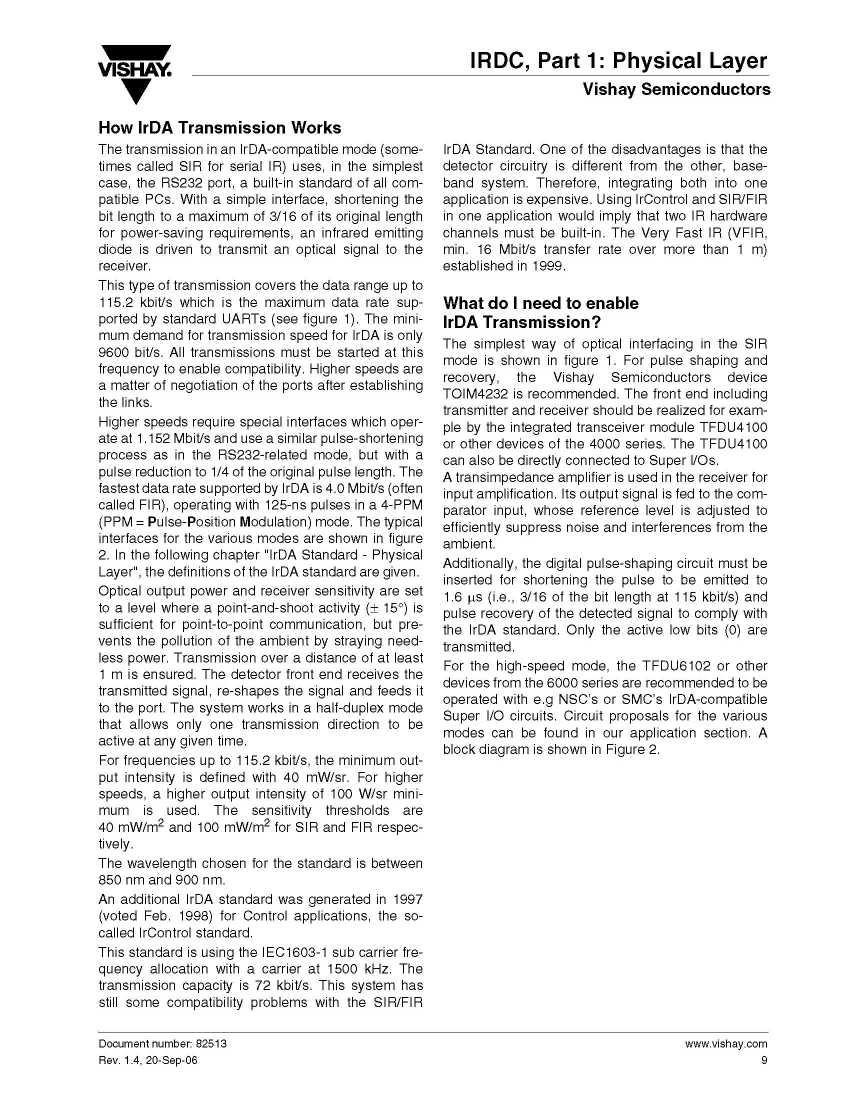|
#2
March 29th, 2017, 02:24 PM
| |||
| |||
| Re: IRDA Physical Layer Specification V1.5
Here I am providing information about Physical Layer Specification V1.5 of Data Communication According (IRDA) for your reference: Data Communication According (IRDA) Physical Layer Specification V1.5 What is IrDA? IrDA is the abbreviation for the Infrared Data Association, a non-profit organization for setting standards in IR serial computer connections. Executive Summary IrDA was established in 1993 to set and support hardware and software standards which create infrared communications links. The Association's charter is to create an interoperable, low-cost, low-power, halfduplex, serial data interconnection standard that supports a walk-up, point-to-point user model that is adaptable to a wide range of applications and devices. IrDA standards support a broad range of computing, communications, and consumer devices. International in scope, IrDA is a non-profit corporation headquartered in Walnut Creek, California, and led by a Board of Directors which represents voting membership worldwide. As a leading high technology standards association, IrDA is committed to developing and promoting infrared standards for the hardware, software, systems, components, peripherals, communications, and consumer markets. The IrDA - Standard The current IrDA physical layer standard is version 1.4 and includes all changes and add-ons up to VFIR with 16 Mbit/s. Version 1.4 replaced version 1.3 which is obsolete as are all former versions from 1.0 to 1.2. Referring to these versions currently can describe only historical steps of the IrDA - development. What do I need to enable IrDA Transmission? The simplest way of optical interfacing in the SIR mode is shown in figure 1. For pulse shaping and recovery, the Vishay Semiconductors device TOIM4232 is recommended. The front end including transmitter and receiver should be realized for example by the integrated transceiver module TFDU4100 or other devices of the 4000 series. The TFDU4100 can also be directly connected to Super I/Os. A transimpedance amplifier is used in the receiver for input amplification. Its output signal is fed to the comparator input, whose reference level is adjusted to efficiently suppress noise and interferences from the ambient. IRDC, Part 1: Physical Layer The IrDA standard documentation can be found on the IrDA web site. The documents which are public and can be downloaded are shown on the next page. The physical layer is responsible for the definition of hardware transceivers for the data transmission. The physical layer is therefore discussed in the following chapters which define the properties of the front end devices manufactured by Vishay Semiconductors. Data Communication According (IRDA) Physical Layer Specification V1.5     |